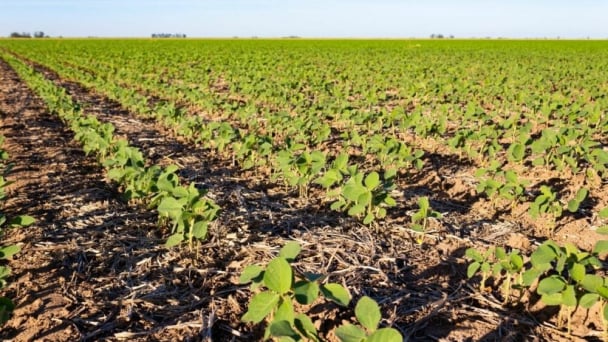May 16, 2025 | 09:46 GMT +7
May 16, 2025 | 09:46 GMT +7
Hotline: 0913.378.918
May 16, 2025 | 09:46 GMT +7
Hotline: 0913.378.918

Migrants wait at the Chaparral checkpoint in Tijuana, Mexico, Jan. 20, 2025. Minutes after U.S. President Donald Trump took office, the U.S. Customs and Border Protection (CBP) announced it has canceled all scheduled appointments for immigration and border processing.
Fear of deportation has led to a sharp drop in farm worker attendance across California's agricultural heartland, leaving crops unharvested following U.S. President Donald Trump's immigration crackdown, local news outlets have reported.
In Bakersfield, located in Kern County, California, residents reported sightings of U.S. Border Patrol agents in unmarked Chevrolet Suburbans allegedly targeting field workers.
Sara Fuentes, a manager at a local gas station, told the California non-profit news site CalMatters that plainclothes agents detained individuals outside her store and only stopped those who "looked like they worked in the fields."
Fuentes added that a typical morning rush of farm workers buying breakfast never materialized that day -- an indication that fear kept them away from work.
The immediate impact is evident in Kern County, one of the nation's most productive agricultural regions. Over the last two weeks, growers have seen sharp declines in their workforce attendance, which they attribute to heightened immigration crackdowns.
Citrus grower and former Kern County Farm Bureau president, Peter Belluomini, reported that his usual harvest crew dropped from 30 workers to just five, saying many were "hiding at home" out of fear.
He told Ag Alert, the weekly newspaper of the California Farm Bureau Federation, that his farm could not harvest the expected volume of citrus because so few workers showed up.
Casey Creamer, president of the citrus growers' trade association California Citrus Mutual, echoed these concerns. "We're in the middle of our citrus harvest," Creamer told CalMatters.
"This sent shockwaves through the entire community. People aren't going to work, and kids aren't going to school." Creamer noted that 75 percent of the workforce did not report to the fields during this critical harvesting period.
Such disruptions highlighted California agriculture's reliance on immigrant labor. The Central Valley, which produces roughly a quarter of the nation's food, depends heavily on farm workers, many of whom lack legal authorization to work in the United States.
A 2022 survey from the U.S. Department of Labor found that 42 percent of farm workers nationwide were undocumented, and the California Farm Bureau estimated that around half of California's agricultural workforce was undocumented.
The potential economic fallout of labor shortages and deportations looms large.
Richard S. Gearhart, an associate professor of economics at California State University-Bakersfield, described the loss of a significant portion of the farm labor force as "absolute economic devastation" and warned of a "recession-level event if this becomes the new long-term norm."
Meanwhile, farmers share similar worries in Monterey County on the California coast, which includes the famed Salinas Valley -- often called "the Salad Bowl of the World."
Norm Groot, executive director of the Monterey County Farm Bureau, told NBC News that the region required about 55,000 migrant workers for harvest season starting in late April. Even the threat of deportation, he noted, could deter many from coming to work, potentially leaving lettuce, strawberries, broccoli, and other crops to wither in the fields.
Concerns have mounted since the Department of Homeland Security announced it would roll back Obama-era guidelines that limited immigration enforcement in sensitive areas such as hospitals, places of worship, and schools.
Agricultural experts warned that the existing farm labor shortage, when combined with a possible 25 percent tariff on Mexican and Canadian imports threatened by the Trump administration, could drive up food prices nationwide.
Citing 2022 data in a Harvard Business School report, Mexico supplied 51 percent of fresh fruit imports and 69 percent of fresh vegetable imports to the United States, while Canada accounted for 2 percent of fresh fruit imports and 20 percent of fresh vegetable imports.
"At a time when many local farms are already facing labor shortages, disruptions like these adversely affect local agricultural production," said Kern County Farm Bureau President Jenny Holtermann in a social media statement.
The repercussions of widespread deportations could ripple far beyond California. According to an analysis by Iowa State University's Investigate Midwest, undocumented workers comprise about 16 percent of all food supply chain employees nationwide, including 41 percent of farm workers.
The study suggested that deporting a large portion of these workers could potentially increase food prices by 10 percent and lead to the "likely collapse" of the American agricultural system.
Xinhua

(VAN) Fourth most important food crop in peril as Latin America and Caribbean suffer from slow-onset climate disaster.

(VAN) Shifting market dynamics and the noise around new legislation has propelled Trouw Nutrition’s research around early life nutrition in poultry. Today, it continues to be a key area of research.

(VAN) India is concerned about its food security and the livelihoods of its farmers if more US food imports are allowed.

(VAN) FAO's Director-General emphasises the need to work together to transform agrifood systems.

(VAN) Europe is facing its worst outbreak of foot-and-mouth since the start of the century.

(VAN) The central authorities, in early April, released a 10-year plan for rural vitalization.

(VAN) Viterra marked a significant milestone in its carbon measurement program in Argentina, called Ígaris, reaching 1 million soybean hectares measured.